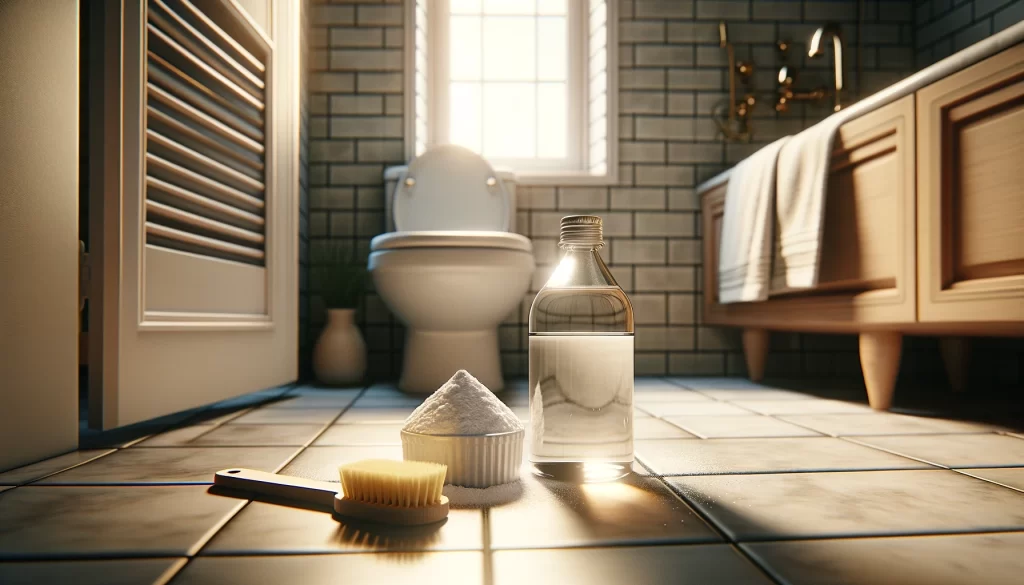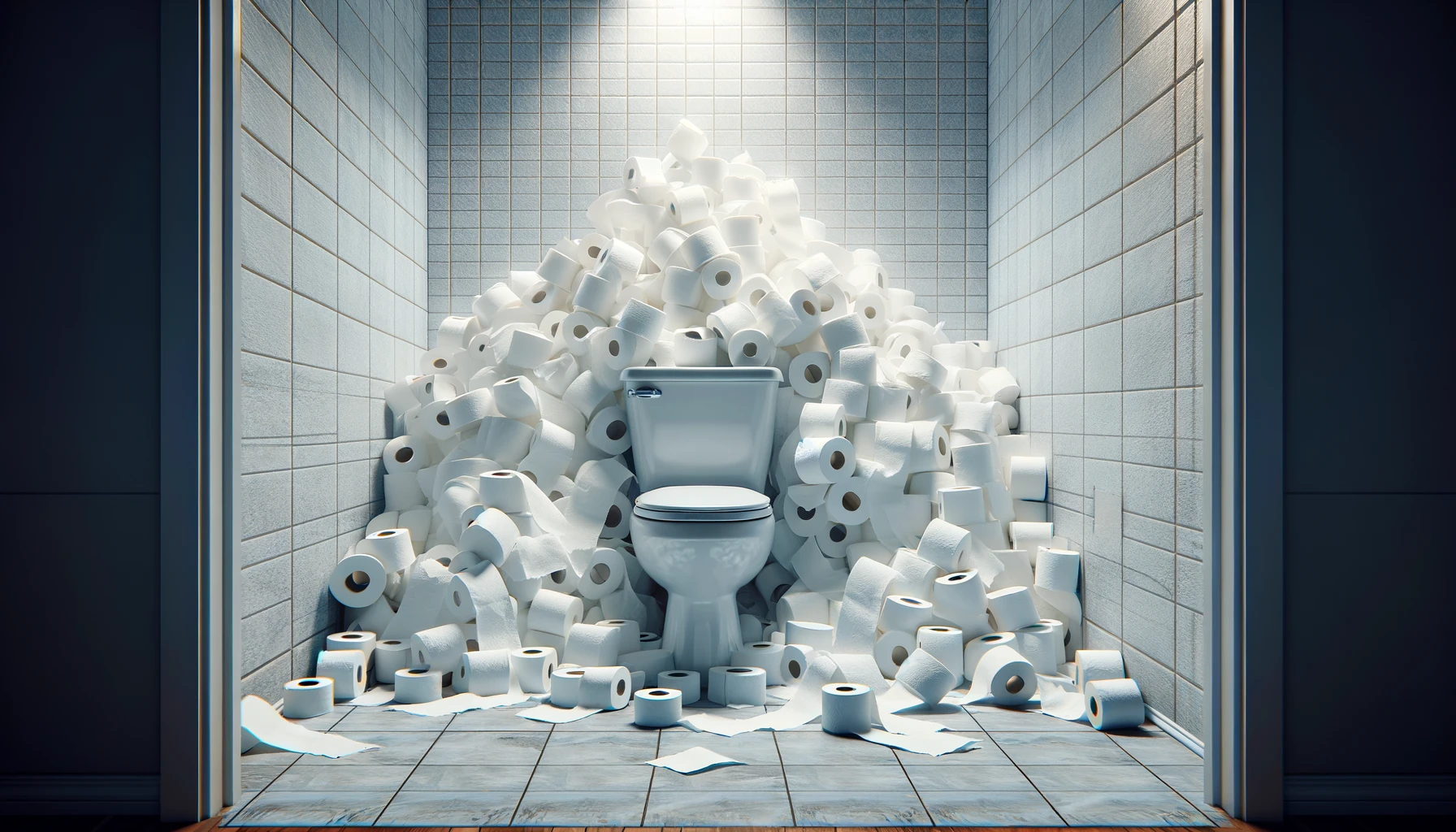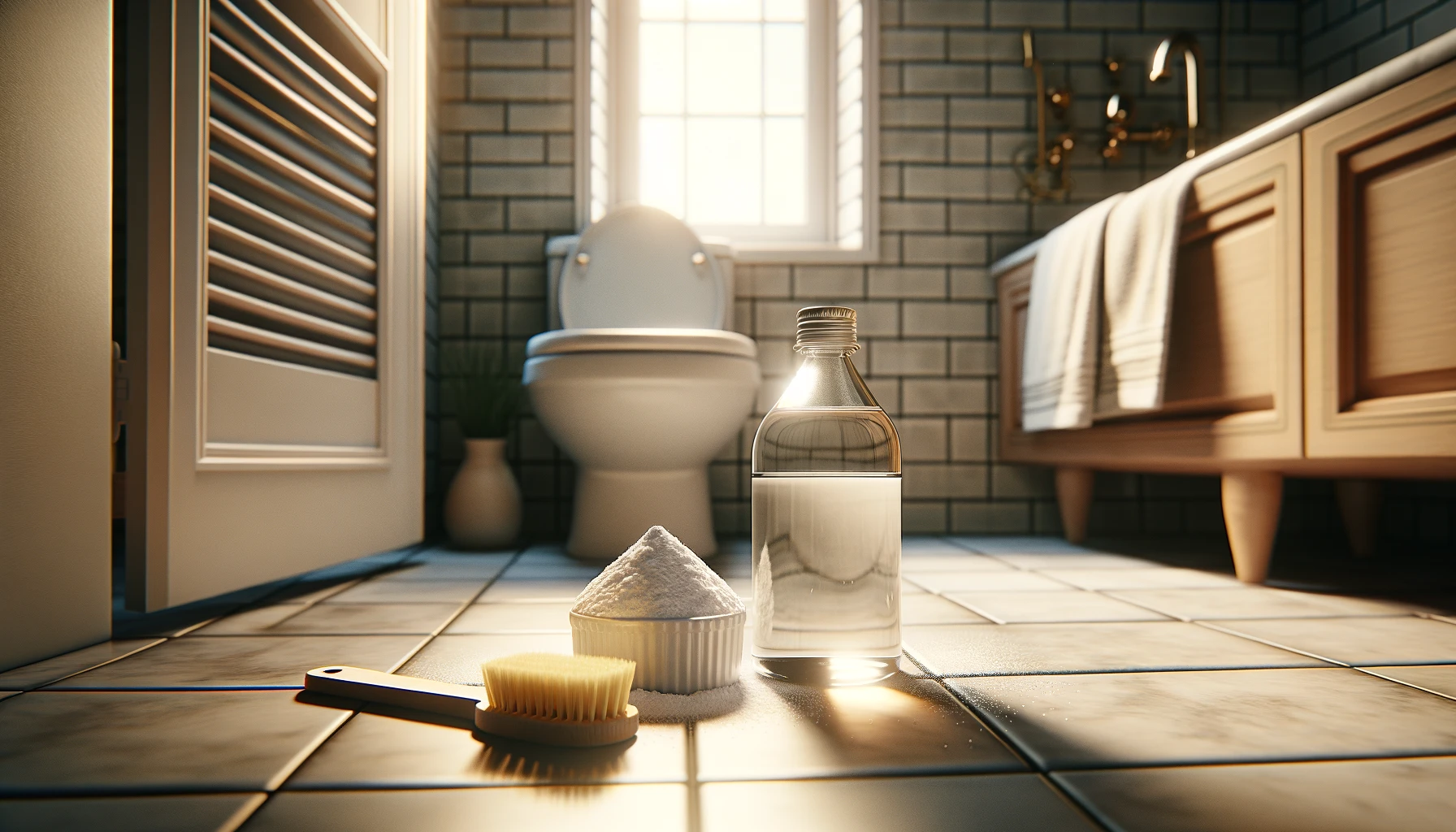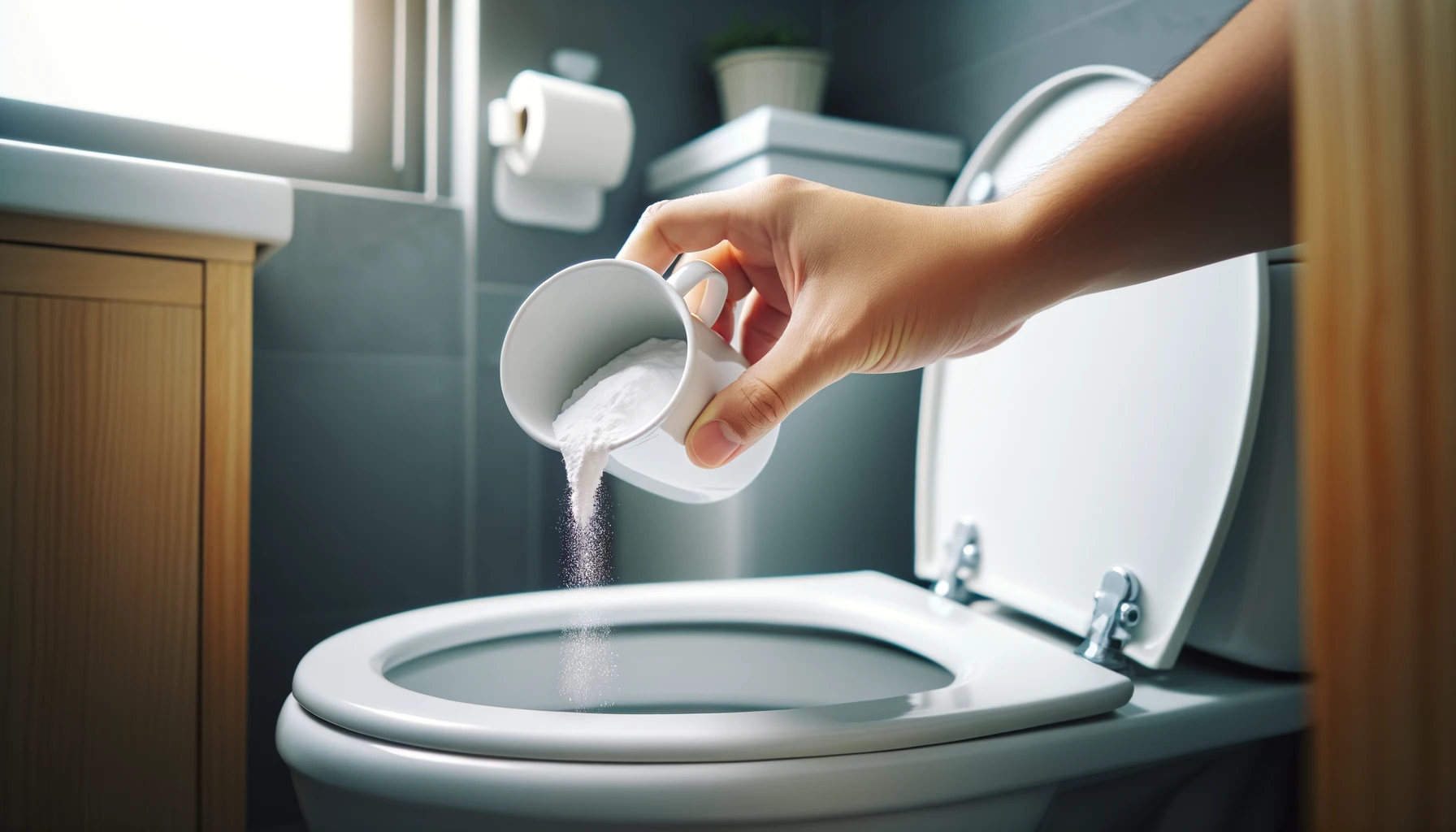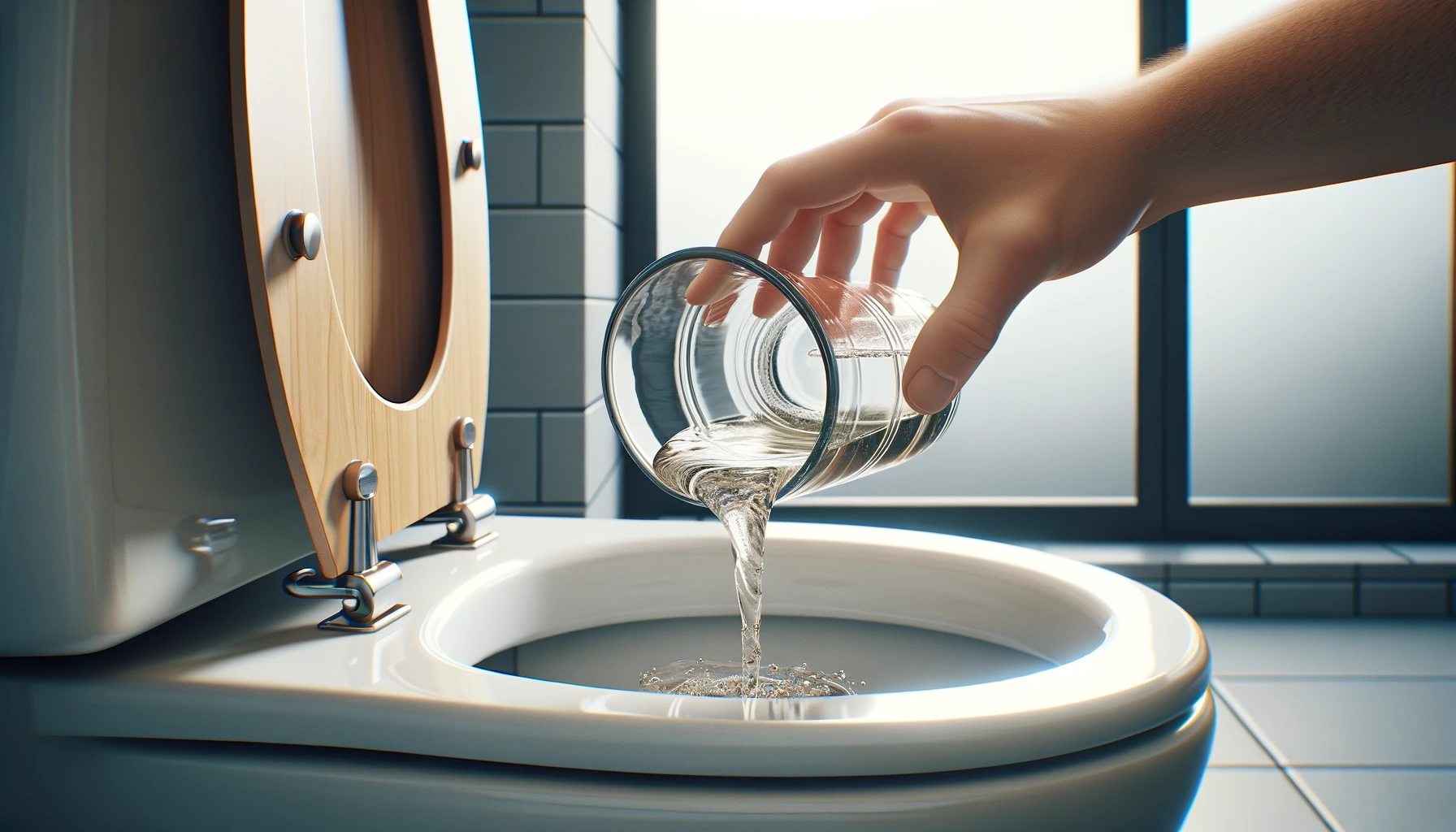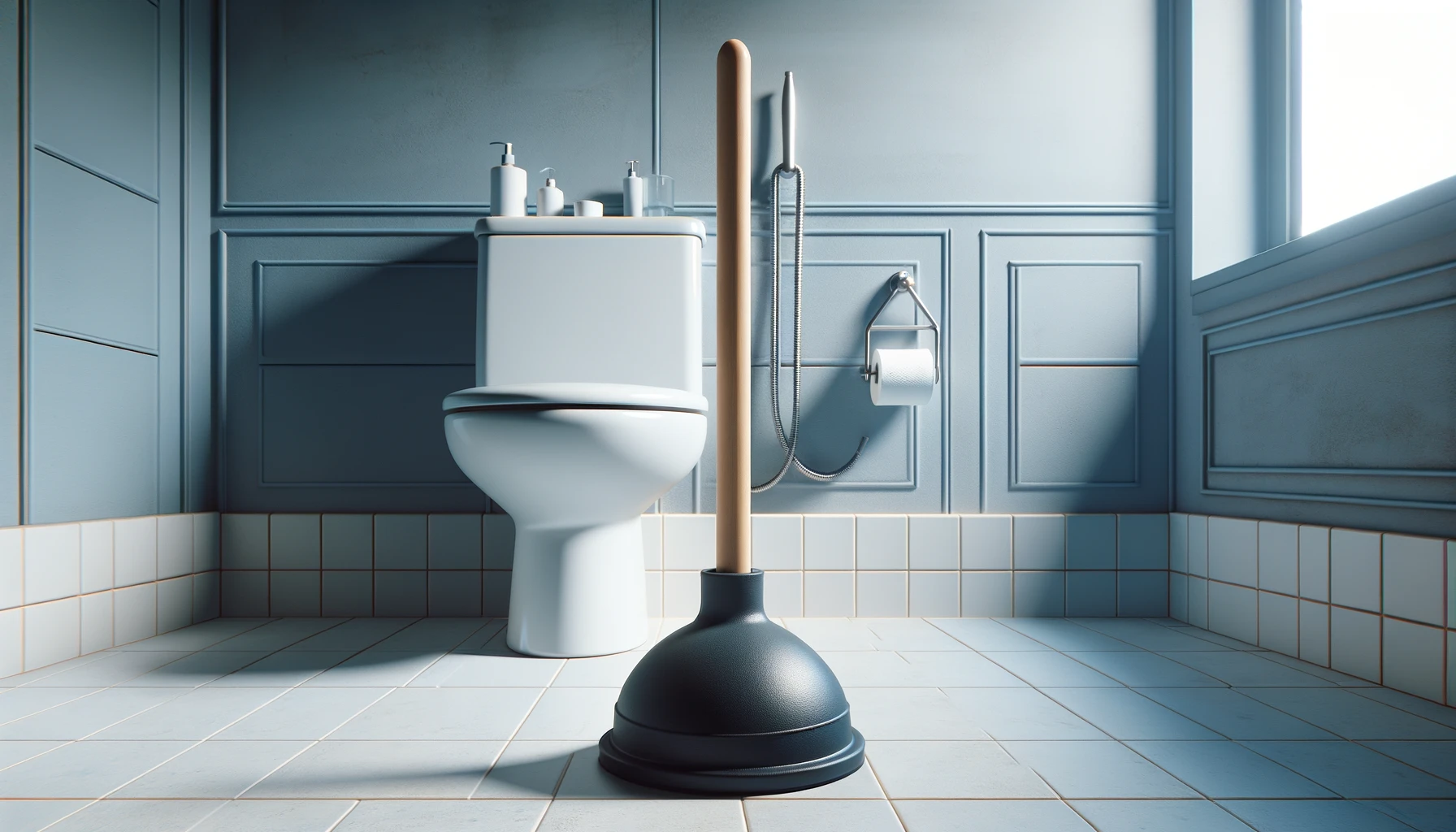Facing a clogged toilet is a challenge that many of us encounter, leaving us searching for effective and safe solutions. At Lund Plumbing, we understand the frustration that toilet clogs can cause in your daily routine.
That’s why we’re here to share a reliable method that not only addresses these annoying blockages but does so in an eco-friendly manner. We’ve found that using vinegar and baking soda to unclog your toilet offers a powerful solution without the need for harsh chemicals.
In this post, we’ll guide you through the reasons behind toilet clogs, and you’ll learn how to unclog a clogged toilet with baking soda and vinegar. We provide a step-by-step process for using these common household items to clear your plumbing woes. Join us as we delve into this natural remedy, along with additional insights on maintaining a clog-free bathroom and how our expertise at Lund Plumbing can support your plumbing needs.
Table of Contents
ToggleKey Takeaways:
- Clogged toilets can be caused by various factors, such as flushing improper items or build-up of waste and debris.
- Baking soda and vinegar are effective and affordable alternatives to harsh chemicals for unclogging a toilet.
- To unclog a toilet with baking soda and vinegar, simply pour the ingredients into the bowl, wait, and flush. Regular maintenance and proper waste disposal can help prevent clogs.
What Causes Toilets to Clog?
Toilets can become clogged due to various factors, including improper disposal of waste, using excessive amounts of toilet paper, or even issues with the plumbing system.
One of the common culprits behind toilet clogs is the flushing of non-flushable items like hygiene products, paper towels, or even children’s toys, which can easily block the pipes and disrupt the sewage flow. In addition, the buildup of debris and mineral deposits within the plumbing system over time can also contribute to frequent clogging incidents. Proper waste disposal practices play a crucial role in preventing such issues, ensuring that only toilet-friendly items are disposed of. Residents in cities like Boston, MA should be particularly mindful of their waste disposal habits to avoid potential plumbing headaches.
Why Use Baking Soda and Vinegar to Unclog a Toilet?
Using baking soda and vinegar to unclog a toilet is a natural and effective method that can help break up the clog without harsh chemicals, making it a preferred choice for those looking for environmentally friendly and safe solutions. These two common household ingredients offer a powerful solution to minor clogs, providing an eco-conscious alternative to conventional methods.
How Does This Method Work?
The combination of baking soda and vinegar creates a chemical reaction that produces a fizzing action, helping to break down and dislodge the clog in the toilet by loosening the debris and allowing it to be flushed away. When baking soda, also known as sodium bicarbonate, comes in contact with vinegar, which contains acetic acid, a reaction occurs, producing carbon dioxide gas. This gas forms bubbles, creating the fizzy effect that helps to dislodge the obstruction. The fizzing action works to break up the blockage, making it easier to flush away. The combination of these two common household ingredients is not only effective but also a safer and environmentally friendly alternative to harsh chemical drain cleaners.
Materials Needed
To unclog a toilet using baking soda and vinegar, you will need a few essential materials, including baking soda, white vinegar, hot water, and a plunger.
Step-by-Step Guide to Unclogging a Toilet with Baking Soda and Vinegar
Follow this comprehensive step-by-step guide to effectively unclog a toilet using baking soda and vinegar, ensuring a hassle-free solution to stubborn clogs without the need for harsh chemicals.
Step 1: Preparation
Assess the Situation and Gather Supplies
Before you begin, ensure the toilet bowl isn’t already at risk of overflowing. If the water level is high, use a small container or cup to carefully remove water until the bowl is no more than half full. This creates enough space for the solution to work effectively and prevents spills.
You’ll need:
- 1 cup of baking soda
- 1 cup of vinegar
- Hot (but not boiling) water
- A bucket or container
Step 2: Pour Baking Soda into the Toilet Bowl
Carefully pour one cup of baking soda directly into the toilet bowl. Focus on the area where the clog is suspected. Allow the baking soda to settle for a minute or two, which will help it distribute evenly throughout the water.
Step 3: Pour Vinegar into the Toilet Bowl
Next, slowly pour one cup of vinegar into the bowl. The interaction between the baking soda and vinegar will create a fizzy, bubbling reaction. This chemical reaction helps to loosen minor blockages and break down debris in the pipes.
This entertaining reaction is not just for show; it serves a practical purpose in plumbing. The formation of carbon dioxide gas during this mini-eruption produces fizzing action that’s instrumental in breaking down and loosening the toilet clog, making this method effective for clearing the blockage without the mess of an actual volcano overflow in your bathroom.
Step 4: Wait for the Reaction to Work
Allow the baking soda and vinegar mixture to sit for about 20-30 minutes. This waiting period gives the reaction enough time to work on dissolving the clog. Avoid using the toilet during this time to ensure the mixture can do its job effectively.
Step 5: Flush with Hot Water
After the waiting period, pour hot (but not boiling) water into the toilet bowl. The heat helps dislodge and wash away any remaining debris. Once the water has settled, flush the toilet to see if the clog is resolved.
Step 6: Evaluate and Repeat if Necessary
If the toilet remains clogged, avoid repeated flushing, as this can lead to overflow. Instead, repeat the process. For particularly stubborn clogs, you may need to use a plunger or a plumbing snake to supplement this method.
Alternative Methods for Unclogging a Toilet
Along with using baking soda and vinegar, there are alternative methods for unclogging a toilet, such as using a plunger or a plumbing snake for more severe blockages.
Using a Plunger
When faced with a clogged toilet, using a plunger can be an effective method to create suction and dislodge the blockage, restoring proper flow to the plumbing system.
To unclog a toilet using a plunger, start by positioning the rubber end of the plunger over the drain opening. Ensure a tight seal is formed between the plunger and the toilet bowl to maximize suction power. Next, push the plunger down firmly, and then pull it up with force, repeating this motion vigorously. This plunging action helps to dislodge the debris causing the blockage. The suction created by the plunger can effectively clear most toilet clogs, providing a quick and efficient solution for plumbing issues.
Using a Plumbing Snake
For toilets without a plunger or in cases of severe blockage, a plumbing snake can be used to reach deeper into the pipes and dislodge stubborn clogs that are causing the backup.
Unlike plungers which require a certain amount of water in the bowl to be effective, a plumbing snake can be used even in instances where the water level is low, making it a versatile tool for toilet maintenance. The flexible and elongated design of the snake enables it to navigate through twists and turns in the pipes, ensuring that it can reach blockages that are located further down the plumbing system.
Tips for Preventing Clogged Toilets
To avoid future clogs and maintain your plumbing system in top condition, consider following these tips for preventing clogged toilets through regular maintenance and proper waste disposal practices.
Proper Disposal of Waste
Dispose of household items properly to prevent blockages in your sewage lines and maintain the integrity of your plumbing system, especially in areas like Boston where plumbing issues can be common.
Improper disposal of household items, such as oils, fats, wipes, and other non-biodegradable materials, can lead to clogged pipes and sewer backups, causing inconvenience and potential health hazards.
Blocked sewage lines not only disrupt your daily routine but can also result in costly repairs and damage to your property and the surrounding environment.
It is crucial to raise awareness about the impact of incorrect waste disposal practices on plumbing systems, highlighting the need for responsible waste management to protect the infrastructure in cities like Boston.
Regular Maintenance and Cleaning
Schedule regular maintenance checks with a plumber to ensure your plumbing system is in top condition, preventing potential clogs and addressing any issues promptly..
Regular maintenance appointments with a skilled plumber can be a game-changer when it comes to the overall health of your plumbing. By proactively tackling small issues before they escalate, you can avoid major disruptions and costly repairs down the line. Preventive maintenance not only safeguards your home from unexpected leaks or bursts but also helps in maintaining optimal water flow and pressure.
Staying ahead of potential problems is key to enjoying a stress-free and efficient plumbing system.
Solving Clogs Easily and Safely
Clearing a clogged toilet doesn’t need to involve calling for professional help or using strong chemicals. Mixing baking soda and vinegar is a safe, effective, and eco-friendly way to deal with common toilet clogs. This easy method shows the power of everyday items in fixing plumbing issues, highlighting the benefits of choosing simple, green solutions.
Keep in mind, staying on top of regular maintenance and being careful about what you flush can help avoid clogs and keep your plumbing running smoothly.
Need Help? Lund Plumbing is Ready
If you’re looking for assistance with stubborn plumbing problems that you can’t fix on your own, Lund Plumbing is ready to help. Our team is just a phone call away, prepared to tackle any plumbing issue to ensure your bathroom remains clog-free.
Frequently Asked Questions
1. How do I unclog a toilet with baking soda and vinegar?
To unclog a toilet with baking soda and vinegar, start by pouring one cup of baking soda into the toilet bowl. Then, slowly pour two cups of vinegar into the bowl. Let the mixture sit for about 30 minutes, then flush the toilet to see if the clog has been cleared.
2. Can I use baking soda and vinegar to unclog a severely clogged toilet?
Yes, baking soda and vinegar can be used to unclog even severe toilet clogs. If the clog is particularly stubborn, you may need to repeat the process a few times or use a plunger to help loosen the clog.
3. Is it safe to use baking soda and vinegar in my toilet?
Yes, baking soda and vinegar are safe to use in your toilet. They are natural, non-toxic alternatives to chemical drain cleaners and will not harm your toilet or pipes.
4. What other ingredients can I add to the baking soda and vinegar mixture for better results?
You can add a few drops of dish soap or a cup of hot water to the baking soda and vinegar mixture for added effectiveness. You can also try using a combination of baking soda, vinegar, and salt for tougher clogs.
5. Can I use this method to unclog a toilet in a commercial building or office?
Yes, this method is safe and effective for unclogging toilets in commercial buildings and offices as well. However, if the clog is too severe, it may be best to call a professional plumber for assistance.
6. How often should I use baking soda and vinegar to prevent future clogs?
It is recommended to use baking soda and vinegar to clean and maintain your toilet once a month to prevent future clogs. This will also help keep your toilet smelling fresh and clean.
Get Expert Help for Stubborn Plumbing Problems
If your toilet still isn’t cooperating after trying the baking soda and vinegar method, it’s time to call in the experts. At Lund Plumbing and Heating, we specialize in solving even the toughest plumbing problems with ease and efficiency. Whether you’re dealing with persistent clogs or other plumbing challenges, our team is equipped to provide the professional assistance you need to get things flowing smoothly again.
Don’t let plumbing issues disrupt your daily life. Reach out to Lund Plumbing and Heating for reliable solutions and expert advice. Together, we can tackle any plumbing problem, ensuring your home’s plumbing system is functioning at its best.

